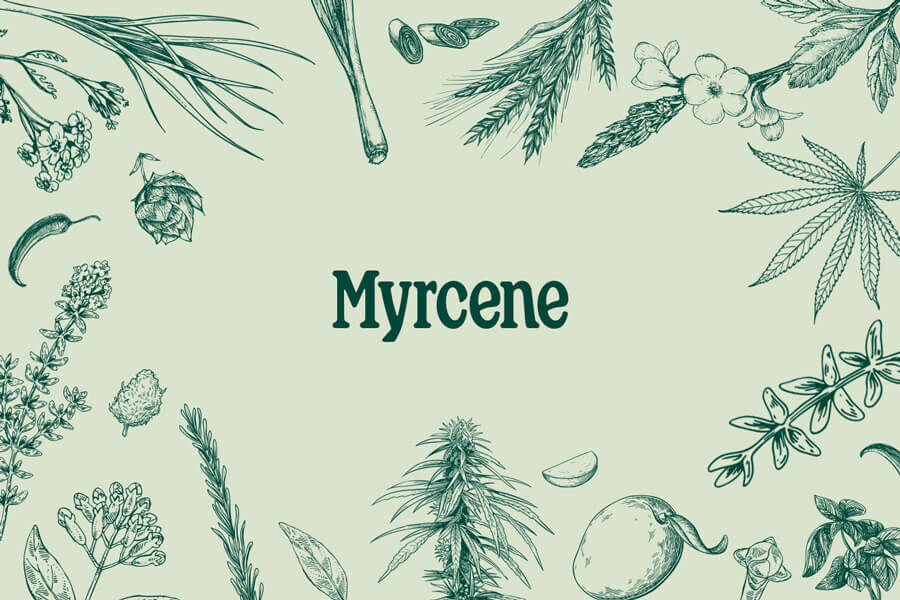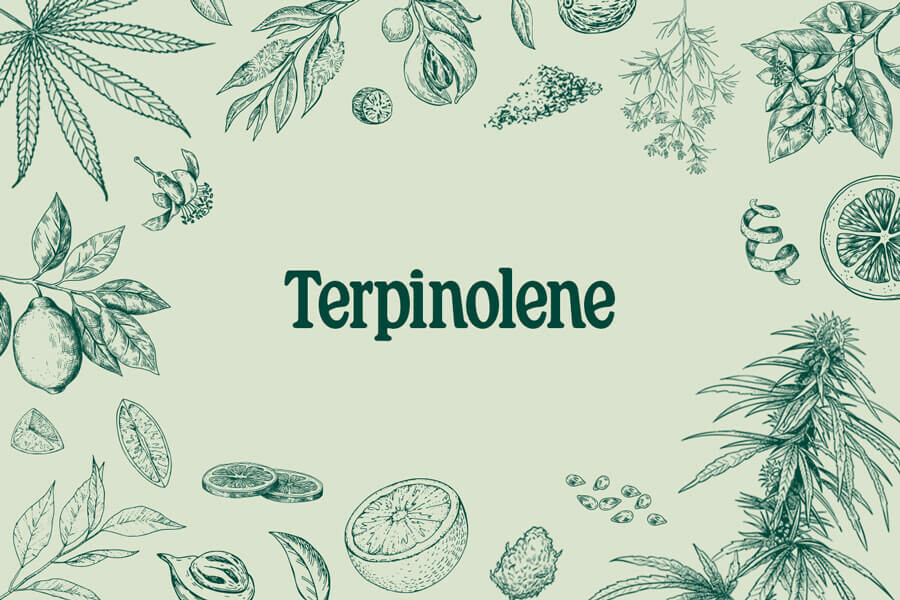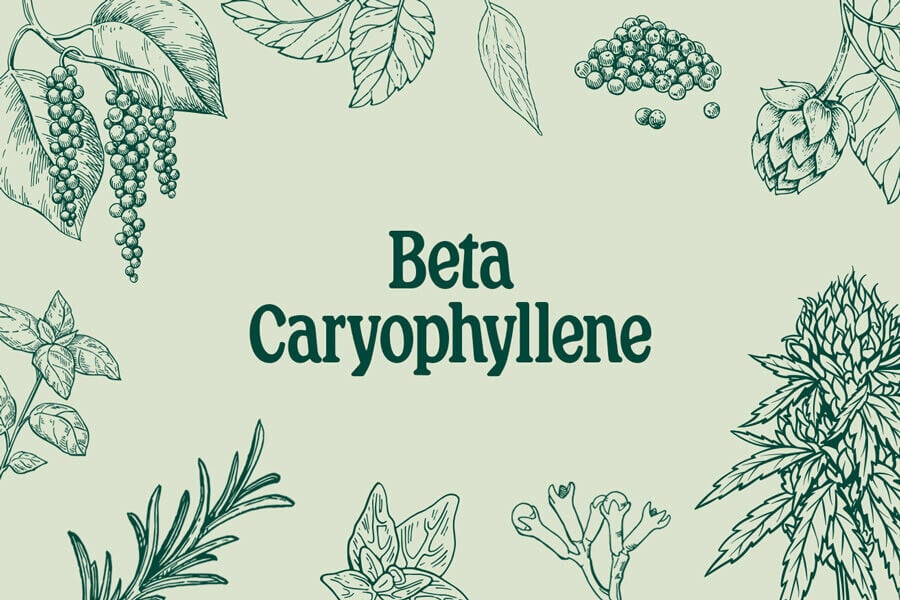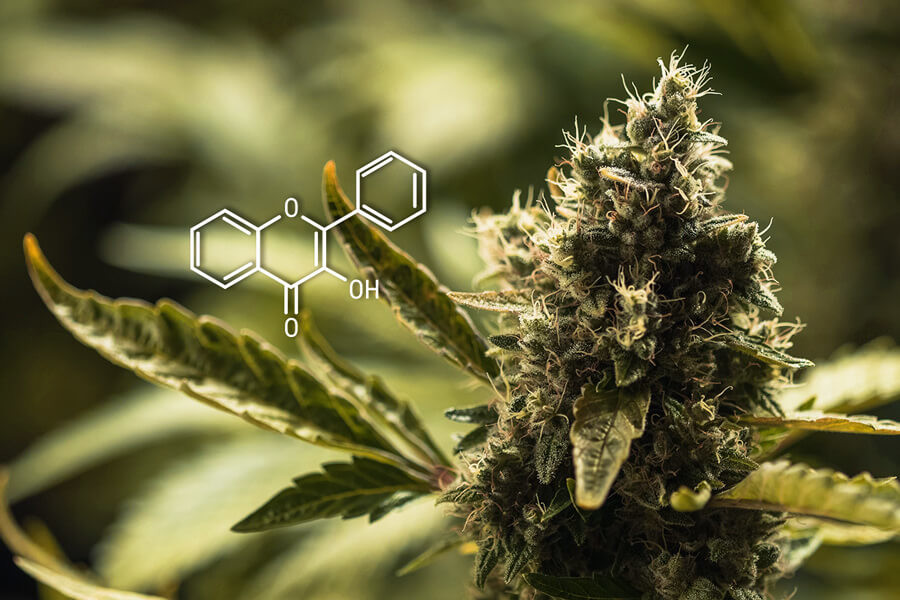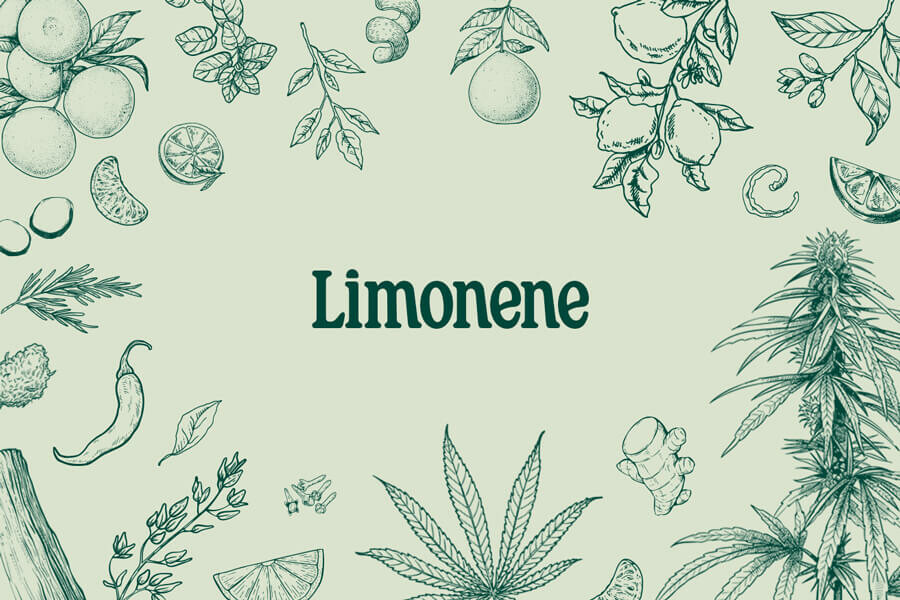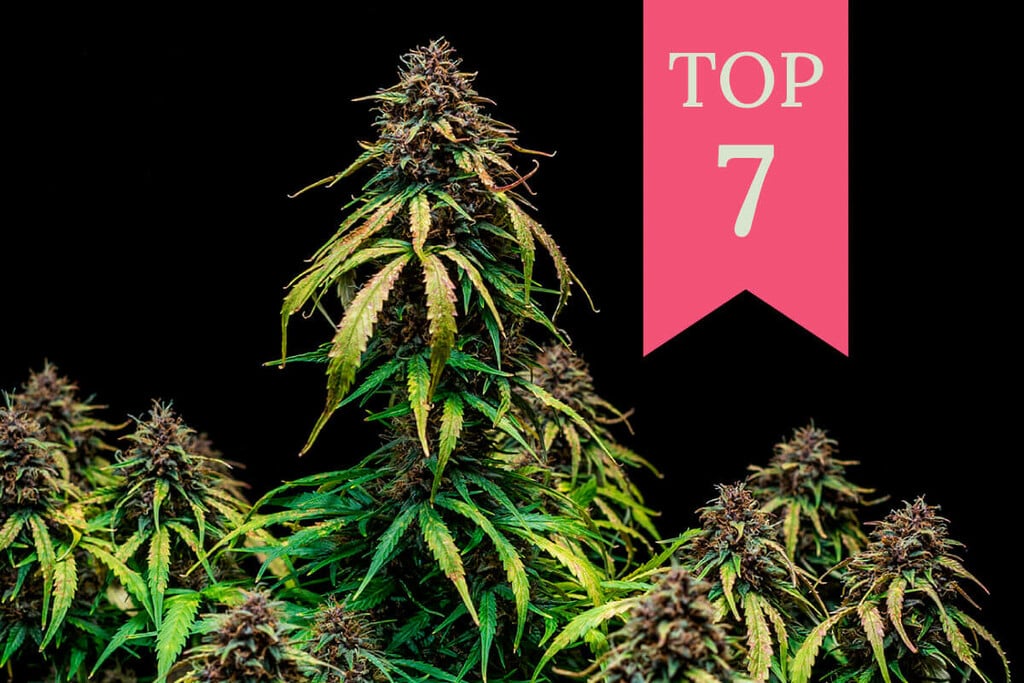.
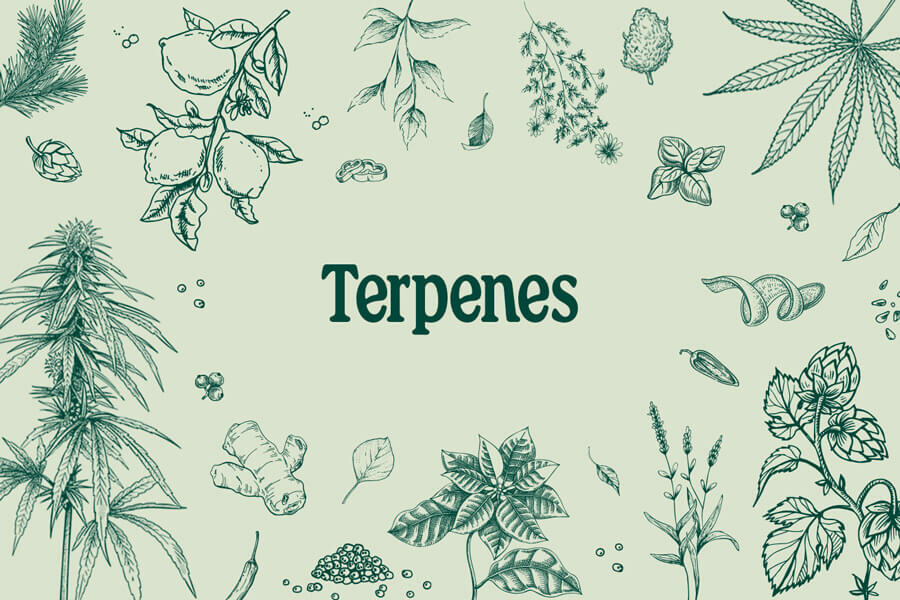
Cannabis Terpenes: How They Work and Their Effects
Terpenes give cannabis plants their unique flavours and smells. Research now shows that they may also play a role for the effects of each strain, so we take a look at what they are and how they work.
Contents:
- What are terpenes?
- The difference between cannabinoids and terpenes
- How do terpenes work?
- Terpenes: the next frontier for medical cannabis
- Do terpenes determine indica or sativa effects?
- Calculating terpene content in plants
- Can you increase terpene production?
- How are terpenes ingested?
- What is a terpene profile?
Cannabis contains hundreds of fascinating phytochemicals. Cannabinoids usually occupy the limelight, but terpenes work behind the scenes to produce invigorating scents and tantalising tastes.. As well as underpinning the sensory side of cannabis, terpenes have a huge impact on the effect of each strain by modulating the cannabis high.
What Are Terpenes?
Terpenes are what gives cannabis strains their distinctive flavours. They are the soluble compounds present in the aromatic oils that the plant produces and that make a strain taste fruity or minty, give it an earthy or citrusy aroma, or can make it smell like cheese.
Cannabis plants produce terpenes in the same glands where they produce THC and CBD, yet terpenes have until recently not gotten too much attention. Growers and medical researchers have in the past focused on THC and CBD, which means the knowledge about terpenes and their function isn’t too widely spread. Only recently has come to light that terpenes play a major role when it comes to the unique effects of marijuana.
Why do plants produce aromatic compounds such as terpenes?
As is often the case in the world of plants, terpenes are one way how plants can defend themselves from predators. By excreting a pungent aroma, plants can repel certain bugs but can also attract the beneficial insects that they need for pollination.
How much and what type of terpenes a cannabis plant produces depends on various factors. The same strain doesn’t necessarily always produce the same aromatic compounds. This can depend on factors such as the climate, what soil and fertilisers are being used, the age of the plant, as well as a few other things.
Today, we have discovered over 100 different terpenes in marijuana. Each particular strain has its unique types and combination of terpenes in various concentrations.
The most interesting thing about terpenes, however, is not that terpenes are responsible for cannabis’ multitude of distinctive flavours and aromas, but that terpenes work synergistically with cannabinoids, such as THC. One indication for this is that some strains may have the exact same levels of THC and CBD, yet their effects can be quite different from each other. Researchers are now saying it is the terpenes that are responsible for a strain’s unique effects.
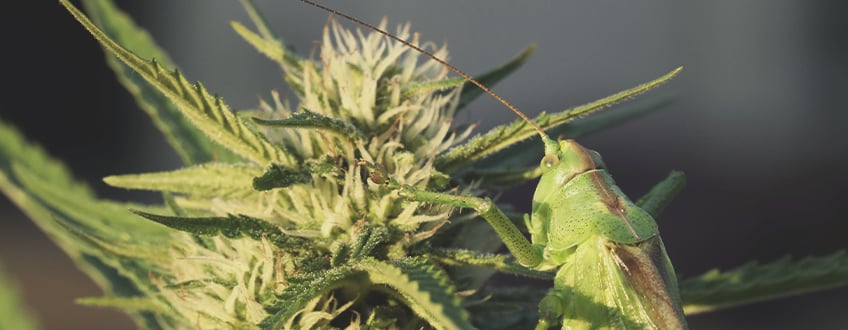
The Difference Between Cannabinoids and Terpenes
Cannabis produces hundreds of different phytochemicals that autumn into several categories. Found all throughout nature, terpenes underpin the unique smells of pine forests, orange peels, and freshly cured cannabis.
Cannabis plants produce about 200 different terpenes, and each cultivar holds varying amounts of each. These aromatic molecules contribute to the diverse tastes and scents of different strains.
Cannabis also produces a more unique class of chemicals: cannabinoids. Although members of this group are found elsewhere in nature, molecules such as THC and CBD are exclusive to weed. These molecules underpin the unique effects of the herb, from psychoactive THC-fuelled experiences to the grounded and clear-headed effects of CBD.
Cannabinoids and terpenes affect the body in different ways. Cannabinoids like THC directly latch onto cannabinoid receptors throughout the body to produce their effects, whereas most terpenes interface with different receptors.
However, molecules such as caryophyllene are classed as both terpenes and cannabinoids. This chemical provides peppery and earthy scents and directly binds to CB2 receptors of the endocannabinoid system, acting as an agonist with an important analgesic role.
How Do Terpenes Work?
Terpenes work in myriad ways. Aside from injecting pleasant tastes and smells into the cannabis experience, these molecules also play a huge role in the effects of each strain.
Cannabis scientists have identified an interplay between terpenes and cannabinoids. Molecules from these two families appear to work together to produce enhanced benefits—a phenomenon known as the entourage effect.
For example, limonene, caryophyllene, and pinene work side by side with THC to produce several benefits, and CBD and linalool also have a special synergistic relationship. Terpenes also produce effects entirely on their own. Vast amounts of studies document the fascinating effects of these molecules in isolation.
Do Terpenes Get You High?
Terpenes don’t exert a psychoactive high in the same way as THC. However, they do work in more subtle ways[1] to alter mood through interaction with the serotonin and dopamine systems. These molecules also influence the high generated by cannabinoids and “tweak” it in noticeable ways. For example, terpenes such as limonene serve up a refreshing and stimulating sensation. In contrast, myrcene provides more of a relaxing and stoning effect.
Will Terpenes Show Up on a Drug Test?
Nope! You’re completely safe with terpenes when it comes to drug testing at work. These molecules are found everywhere, and chances are you unknowingly ingest plenty of terpenes each day. You’re introducing terpenes into your system with every sip of orange juice and every breath you take while walking through the woods.
Terpenes: The Next Frontier for Medical Cannabis
Terpenes have the potential to completely change the cannabis industry. In fact, they’re already making huge waves. The discovery of a synergistic relationship between cannabinoids and terpenes has set the stage for a future of carefully tailored extracts designed for specific conditions and experiences.
Many cannabis users are already setting their attention on full-spectrum extracts that contain more than just cannabinoids. These blends contain high levels of terpenes, flavonoids, and other cannabis phytochemicals that converge to provide a holistic effect.
Now, manufacturers are setting their sights on customised blends that harness the power of the entourage effect to offer greater symptomatic relief.
For example, early research[2] suggests that limonene may boost the antioxidant effects of THC, whereas linalool could enhance the cannabinoid’s muscle-relaxing properties. Likewise, linalool seems to enhance CBD's potential to reduce feelings of nervousness.
Despite these interesting findings, research remains in the early stages. With over 200 terpenes and 100 cannabinoids in the cannabis plant, the future of research on the entourage effect will surely unravel some incredible findings.
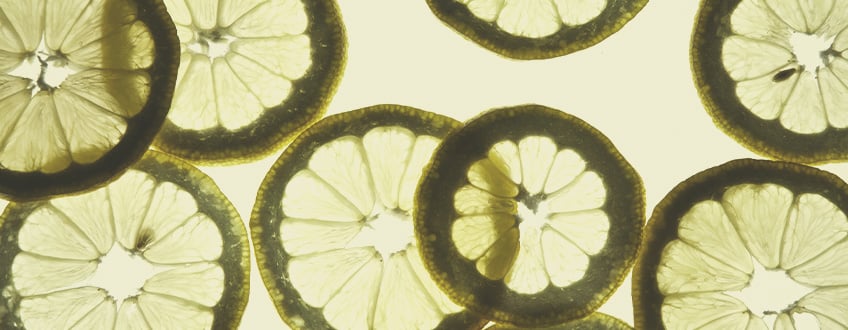
Do Terpenes Determine Indica or Sativa Effects?
If you’re reading this article, you likely know the difference between indica and sativa cannabis strains. This nugget of conventional wisdom has dominated the cannabis space for decades. Traditionally, indica-dominant strains describe stoning varieties, whereas sativa cultivars are described as energetic and cerebral.
However, cannabis scientists have recently scrutinised this paradigm. The traditional model associates these attributes with genetic factors and divides indica and sativa strains into different subspecies of the plant.
More recent discoveries instead link the effects of a strain to its specific cannabinoid and terpene profile. Although indica and sativa titles certainly correlate to the morphology of a strain, they don’t necessarily determine the chemical profile within.
THC plays the role of the active constituent within psychoactive cannabis strains. But, why do different strains produce different highs? Terpenes hold the answer. Through the entourage effect, terpenes determine whether a high will be physical and stoning or cerebral and stimulating.
This new understanding of cannabis has led some researchers to even ditch the idea of strains altogether, as plants of the same cultivar can vary in terpene level as well. Instead, they suggest a new paradigm of “chemovars[3]”, where plants are categorised based on their unique phytochemical profiles and subsequent effects.
Calculating Terpene Content in Plants
So, we know terpenes have a big impact on the effect of a strain, but how can we find out the quantity and type of terpenes in our plants? The simple answer: science. Laboratory technicians are able to determine the terpene content of an individual plant by running a sample through various testing procedures.
Both liquid and gas chromatography work to separate the phytochemicals in a batch of weed, enabling technicians to measure the quantity of each terpene and cannabinoid with high accuracy. However, almost no casual growers have access to this kind of kit or the knowledge of how to use it.
Luckily, most reputable seed banks provide testing data to customers. Whenever you’re shopping for new seeds, have a scroll around and look for terpene and cannabinoid percentages. These numbers are subject to fluctuation based on environmental factors, but they still provide a good idea of what your end product will taste and feel like.
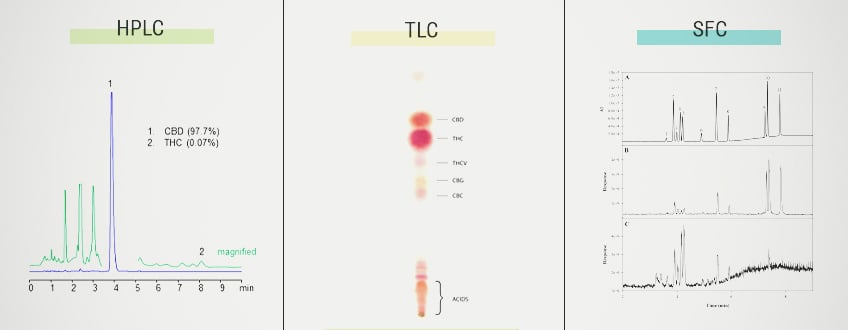
Can You Increase Terpene Production?
Genetics play an important role in the terpene content of a strain. Cannabis breeders actively combine desirable terpene profiles to create strains that possess a specific blend. However, environmental factors can sway just how much of a specific terpene a cannabis plant expresses.
Growers can take advantage of these influencing cues to drive up terpene levels, subsequently enhancing the taste, smell, and effects of a harvest. Cultivators can hone in on several key methods to increase terpene levels, including:
- Adequate stress
- Correct lighting
- Optimal temperatures
- Flushing before harvest
- Proper drying and curing
How Are Terpenes Ingested?
Cannabis terpenes are mostly ingested via smoking and vaping. Every hit of cannabis flower or extract delivers a host of terpenes into the lungs that swiftly pass into the bloodstream.
Interestingly, modern innovations within the cannabis industry have made it so users no longer have to rely on specific strains to access certain terpenes. Several manufacturers now offer terpene extracts—many of which are isolated from natural sources such as fruits—that users can add to their extracts to modulate the experience.
Terpenes are volatile molecules, meaning they degrade at relatively low temperatures. For this reason, vaping offers the best means of keeping terps intact. Vaporizers work through conduction heating, convection heating, or a mix of the two, using much lower temperatures than those found at the burning end of a joint. Plus, modern vaporizers allow users to alter temperature settings within a single digit. Because different terpenes have different evaporation points, these devices enable users to target specific terps.

What Is a Terpene Profile?
Terpene profiles refer to the unique cocktail of aromatic molecules within each plant. Every strain possesses a unique terpene profile made up of varying percentages of different molecules. The most common terpenes—caryophyllene, myrcene, and pinene—usually come to the fore in most terpene profiles, alongside hundreds of less abundant terpenes.
The Common Terpenes In Marijuana
As discussed, there are more than 100 different types of terpenes in marijuana; however, this doesn’t take into account the many different variations – such as amount and concentration. A good example of this would be to compare a lemon to an orange. Both fruits contain the exact same type of terpene, limonene, but in different concentrations. A small variation of the amount is enough to make a lemon smell quite different to an orange.
THE 5 MOST POPULAR TERPENES FOUND IN CANNABIS
| MYRCENE | LIMONENE | PINENE | LINALOOL | BETA- CARYOPHYLLENE |
|
 |
|
|
|
|
|
 |
|
|
|
|
|
 |
|
|
|
|
|
 |
|
|
|
|
|
 |
|||||
| MYRCENE | |
| FOUND IN |
|
| EFFECTS |
|
| HELPS AGAINST |
|
| FLAVOUR |
|
| RQS STRAINS | |
| LIMONENE | |
| FOUND IN |
|
| EFFECTS |
|
| HELPS AGAINST |
|
| FLAVOUR |
|
| RQS STRAINS | |
| PINENE | |
| FOUND IN |
|
| EFFECTS |
|
| HELPS AGAINST |
|
| FLAVOUR |
|
| RQS STRAINS | |
| LINALOOL | |
| FOUND IN |
|
| EFFECTS |
|
| HELPS AGAINST |
|
| FLAVOUR |
|
| RQS STRAINS | |
| BETA-CARYOPHYLLENE | |
| FOUND IN |
|
| EFFECTS |
|
| HELPS AGAINST |
|
| FLAVOUR |
|
| RQS STRAINS |
MYRCENE
Myrcene is the most commonly found terpene in marijuana, making-up the majority of aromatic oils in various cannabis strains. Myrcene can also be found in some other plants such as hops. Some compare Myrcene’s aroma to that of cloves. It is known to have anti-inflammatory, anti- bacterial and pain-relieving (analgesic) properties. Myrcene has a sedative, calming and relaxing effect, and has been shown to enhance transdermal absorption. However, there is a lack of hard data regarding its impact on the permeability of cell membranes, particularly the blood-brain barrier (BBB)[6].
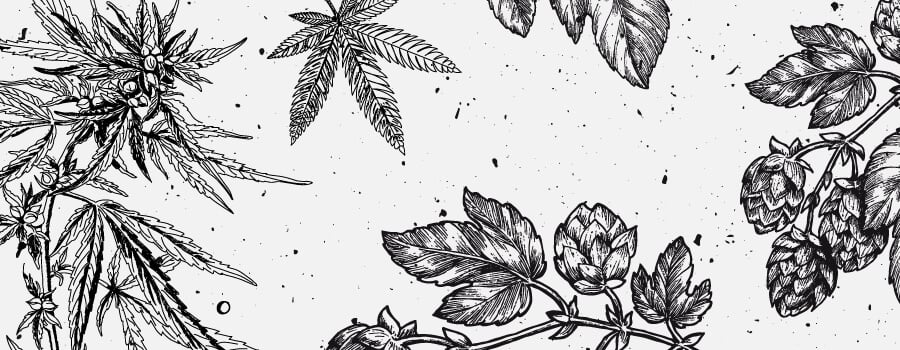
LIMONENE
After Myrcene, Limonene is the second-most common terpene that we find in marijuana. As the name suggests, it has a strong citrus smell. It is known for its anti-fungal and anti-bacterial properties. Research suggests that limonene also works as an anti-carcinogenic[4] and that it may help preventing the growth of tumours.
Limonene can effortlessly enter the blood-brain barrier. It is understood to help increase mental focus and attention, as well as benefitting our general well-being. There is anecdotal evidence that it is also beneficial for sexual health. Some products on the market today use limonene to treat depression and anxiety. It is a natural insect repellent, one of the aromatic terpenes plants use as a natural defence from insects and other predators. Haze strains are a great source of this terpene.
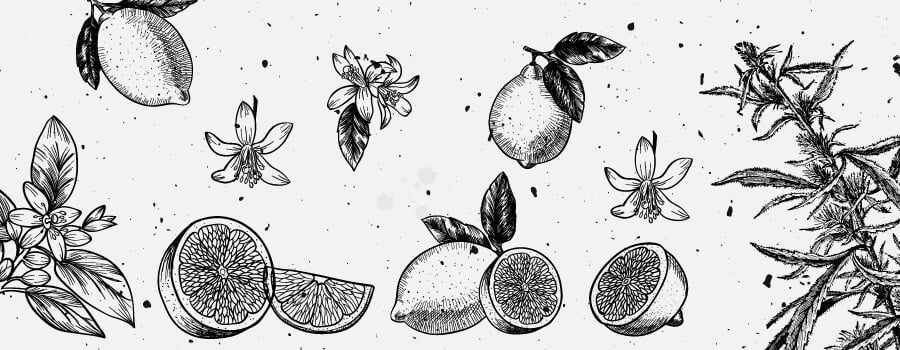
LINALOOL
Linalool is reminiscent of fresh flowers. It has a floral lavender smell with a hint of spiciness. It induces a sedative and calming effect and is used for the treatment of nervousness and anxiety. It is thought to have analgesic and anti-epileptic properties. Its effectiveness in treating certain types of cancers[5] is also currently being researched. Linalool is the terpene that is partly responsible for the calming and sedative effects of certain cannabis strains.
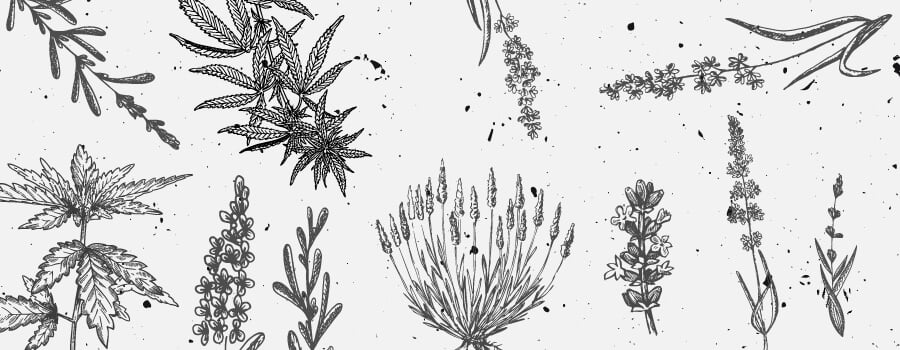
CARYOPHYLLENE
Caryophyllene is a spicy flavour that is often found in herbs and spices such as black pepper. It is known for being a strong local anti-inflammatory and analgesic. Cloves that are known as being a natural remedy for toothaches contain good amounts of this terpene. Caryophyllene is also said to be anti-fungal.
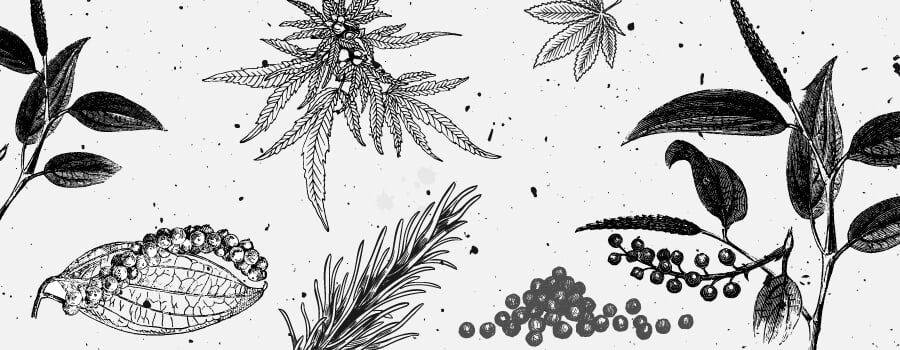
PINENE
The name might give it away; pinene has a scent that reminds of pine and fir trees. Many plants contain pinene; for example, Rosemary and Sage. This terpene is understood to have anti- inflammatory and local antiseptic properties. It is also known as being an expectorant and has a widening effect on the bronchi. Research has shown that pinene can positively affect our memory. Among those cannabis strains with high levels of pinene are the various Skunk strains. Pinene can boost energy and is said to improve concentration.

TERPINEOL
Terpineol has the scent of lime blossoms as well as the pleasant smell of lilac. It is often used to make perfumes and cosmetics. Terpineol is one of the terpenes with a sedative and relaxing effect. Cannabis strains that have high levels of terpineol are often also containing high amounts of pinene. The pinene can make it difficult to detect the terpineol just by smell.
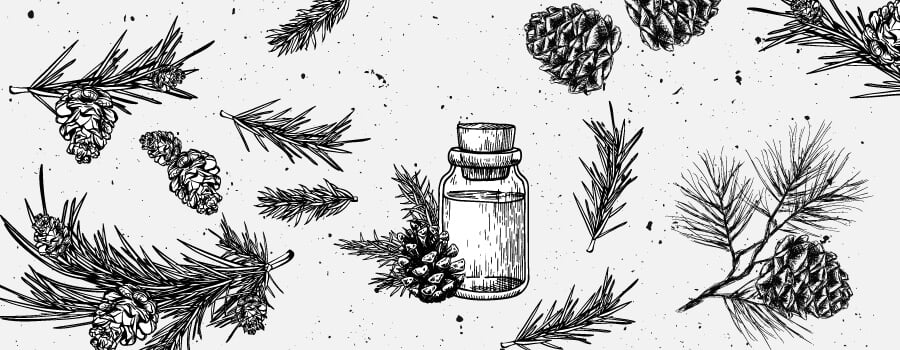
NEROLIDOL
Nerolidol is found in ginger, citronella and niaouli. It is used as a flavouring agent and in perfumery. It has a wooden, earthy-fresh aroma that reminds of bark. In terms of therapeutic benefits, Nerolidol is thought to be anti-fungal and is effective for the treatment of malaria. Nerolidol has a sedative and relaxing effect.
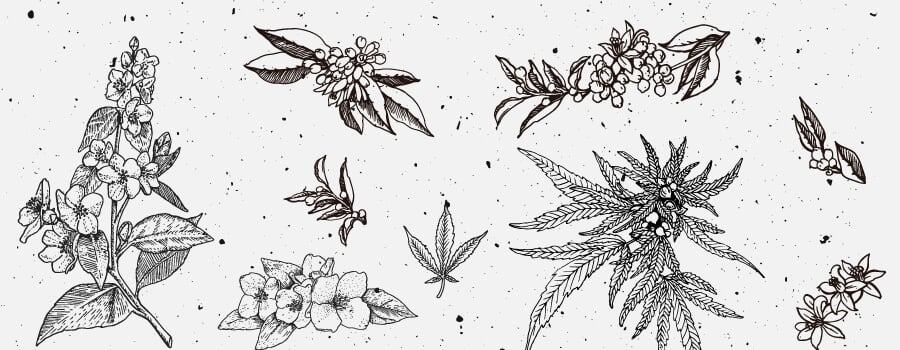
BORNEOL
Borneol, found most abundantly in Rosemary, has a fresh, minty camphor aroma. This terpene has a long history in Chinese medicine where it sees use for the treatment of stress and fatigue. It is a local anaesthetic with sedative and antispasmodic properties. It is also a natural insect repellent.
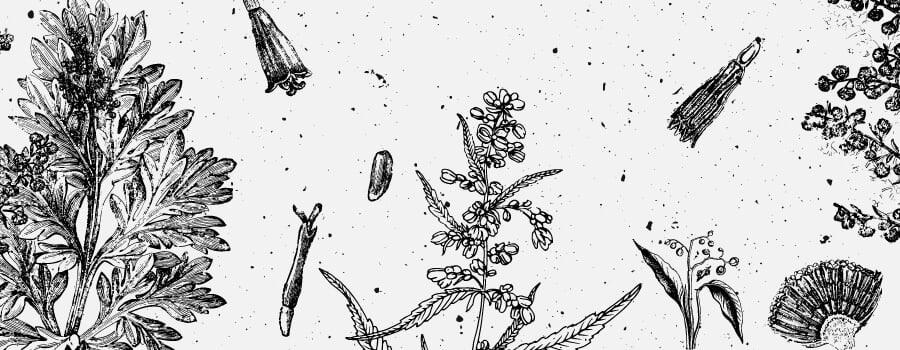
EUCALYPTOL
Eucalyptol is the terpene found in essential eucalyptus oil. It has very fresh, cooling and minty smell. It is thought have pain-relieving properties along with its ability to improve concentration and focus. For that reason, it is also often found in plants that are used for meditation.
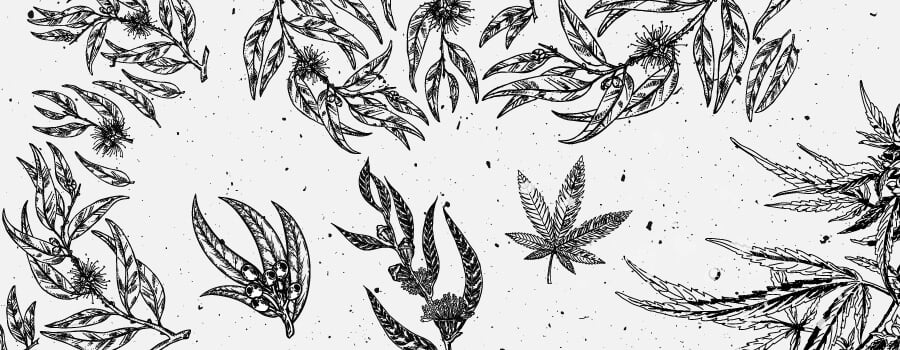
HUMULENE
Humulene adds woody, earthy, and spicy notes to specific cannabis strains. Chances are, these strains also remind you of your favourite IPA. After all, humulene occurs in high levels in the hops used to make these delicious ales. Aside from tasting incredible, humulene exerts a soothing effect that brings a sense of relaxation and peace.
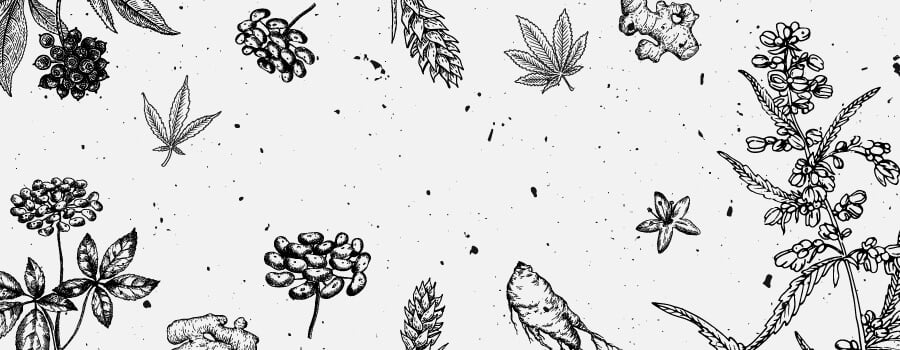
CAMPHENE
Often found in low quantities in most strains, camphene still makes its appearance known in the taste and smell of these varieties. The chemical gives off a pungent scent of earthiness and pine, adding refreshing and grounding qualities to the mix. The terpene also appears to soothe the skin, and boasts antioxidant properties.

GERANIOL
Geraniol occurs in numerous plant species, from lemongrass and carrots to blueberries and cannabis. The terpene adds delicious flavours of fruits, flowers, sweetness, and citrus into cannabis flowers, making high-geraniol varieties popular among users that hold taste in high regard.

BISABOLOL
As a minor terpene, you won’t find any strain high in bisabolol (at least not yet). However, the terpene still manages to produce noticeable effects. Also responsible for some of the relaxing effects of chamomile, bisabolol contributes a honey-like aroma and a deeply relaxing effect to several cultivars.

OCIMENE AND GUAIOL
Ocimene and Guaiol are two of the most abundant terpenes found in cannabis. Despite their common nature, research still lacks in regards to their unique effects. Nonetheless, we do know that they add mouth-watering flavours to cannabis strains, including power hits of sweetness, wood, and pine.

CARENE
Do you enjoy the tastes of musk, lemon, and sweetness when smoking weed? In that case, you’ve probably been inhaling a lot of carene. Early research suggests that carene exerts a positive effect on the nervous system, possibly helping to boost memory.

- Cannabis Pharmacology: The Usual Suspects and a Few Promising Leads - PubMed https://pubmed.ncbi.nlm.nih.gov
- Taming THC: potential cannabis synergy and phytocannabinoid-terpenoid entourage effects https://www.ncbi.nlm.nih.gov
- Cannabis: From Cultivar to Chemovar II—A Metabolomics Approach to Cannabis Classification https://www.liebertpub.com
- Chemoprevention and therapy of cancer by d-limonene - PubMed http://www.ncbi.nlm.nih.gov
- Linalool exhibits cytotoxic effects by activating antitumor immunity - PubMed http://www.ncbi.nlm.nih.gov
- Cannabis sativa and Hemp | Hertsel, https://www.sciencedirect.com



























